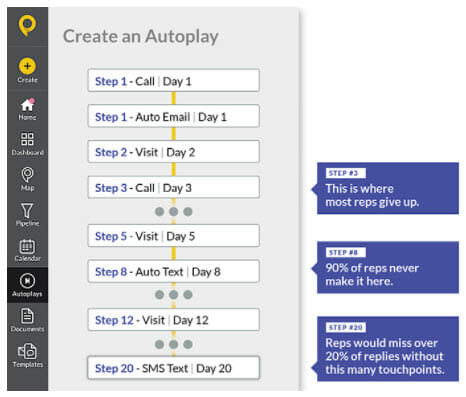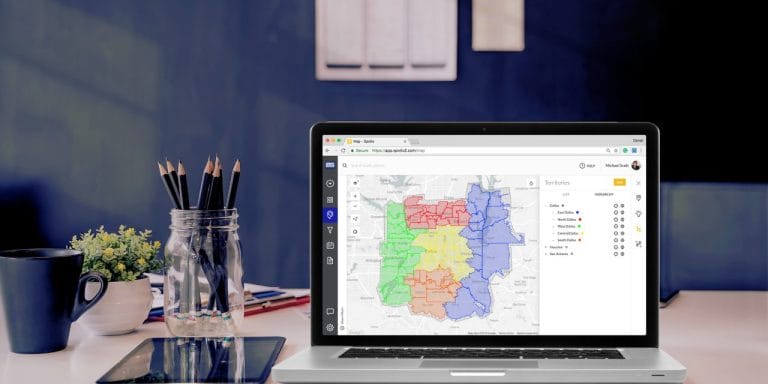When companies are selling to Enterprise-level prospects and the value of a sale is large, there’s a good chance multiple decision makers and budget holders are going to be involved. This can make the sales cycle more complicated and prolonged.
Salespeople and any one else involved from the supplier side could find this confusing, stressful, and time-consuming. It can feel like a whole committee is involved in signing-off on the deal.
Whereas, for those more used to smaller sales cycles and order values, deals are usually done quicker. And with fewer stakeholders involved. Bigger ticket sales can take months to cycle through; always at the risk of a deal collapsing.
In this guest article from CrankWheel, we look at how salespeople can win new clients when dealing with multiple decision makers and budget holders.
10 Strategies for Selling to Multiple Decision Makers and Budget Holders
#1: Qualify on the first call
Imagine working for weeks to get an introduction to a BIG potential client. A customer — if you landed them — with a brand name you can take to the bank. A Big Deal!
Before running away with yourself, there’s something you need to do on the first call: qualify them.
Same as any sales lead. Every salesperson needs to be as sure as possible of every deal entering the pipeline; hence the need to qualify them. And that’s especially the case with potential big deals. On a basic level, aim to check the following:
- Do they potentially need this product/service?
- What pain points would it solve, or what would it help them accomplish?
- Does a budget exist, or could one be approved?
- How soon are they going to need to roll out/buy?
- Who needs convincing (e.g., who are the decision makers and budget holders involved in this process)?
Plus any other qualifying questions you would usually ask. Be as sure as you can that they’re a viable lead before getting managers and anyone at a senior level in the company excited about the prospect.
#2: Establish expectations
Once a lead is qualified, you need an idea of what to expect. Naturally, this is not going to be a quick easy process. But are we talking 3 or 6 months?
How many stages are involved, how many stakeholders? And how many other potential vendors are you competing with?
Getting a clear idea of as much as possible will make it easier to move forward. Knowing all of this also means you’ve got something solid to report to a manager. Sales leads who aren’t clear on these points are potential time wasters, probably with an existing vendor whose they’re trying to squeeze on price.
Be cautious of time wasters. Especially big sales leads who can afford to waste time. Chances are, you can’t waste 6 months on a deal that comes to nothing. So, if there are red flags then be prepared to walk away.
#3: Understand multiple viewpoints
When multiple decision makers are budget holders are involved, you need to understand the various viewpoints that have a voice at the table. The dynamic could be anything from a key decision maker, with overall authority, plus a budget holder and those who are going to be using the product/service, to a range of departments with multiple decision makers and budget holders.
Understandably, this could get confusing. As a salesperson, you need to understand the various needs to be addressed. This is how you tailor pitches according to those needs and requirements.
Here is where the SPOTIO Automation feature, will come in handy. With this, you can simplify data entry and boost productivity by 46%. Keep track of everyone involved in the sales process automatically, and reduce the need for manual data entry.
#4: Tailor stakeholder pitches
Every stakeholder could have a different reason for wanting/needing what you are selling.
For example, you are selling a new type of project management software for IT teams. It’s expensive, so it mainly appeals to mid-size and enterprise clients, as it’s designed around their needs and pain points.
A product manager is going to have a different reason for wanting it than a CFO. Tailor every pitch and argument accordingly, whether you are doing a demo or sending a proposal document.
#5: Handle multiple objections
At the same time, this means you could be fielding multiple objections. Aim to come up with an answer to every one, either by asking more qualifying questions, or working with other stakeholders to understand how to combat any objections being raised.
#6: Identify your advocates
Advocates are an essential part of the sales process when dealing with big sales lead. Having the right advocate on your side could make or break a sale. You need someone with influence, able to support you, who’s keen to start using the product/service.
If you can get an influential advocate on-board, then you could be closer to getting the deal landed.
#7: Deploy impactful sales enablement material
Support the sales process with impactful sales enablement material. Presentations, proposal documents and case studies are all pretty essential when dealing with any prospect. Make sure all of this sales enablement material makes a positive impact.

Here is where the SPOTIO Autoplays feature, is going to be useful. With Autoplays, you can ensure that nothing slips through the cracks. It’s an automated reminder system to check that everything has been sent to a prospect and the sales process for leads of this size is being followed.
#8: Make information sharing easy
When you share sales enablement material with prospects, it helps to keep track of it. Using email tracking software, you can see who’s sharing documents and emails, who’s reading, downloading and opening them.
With this data, it could also show more clearly who the internal advocates are. Also, it could show who’s not spending time getting to understand the proposal, and therefore who you may need to work harder to win over.
#9: Have empathy
Empathy is an important part of the sales process. Aim to understand the dynamics of the group you are dealing with. Alongside that, look for internal issues and cultural politics and processes that could be influencing the sales process.
#10: Be patient
And finally, when it comes to sales that take a while to land, patience is going to be needed. You could be working on this for months, so make sure there are plenty of other leads in the pipeline to keep you busy day-to-day, and keep hitting monthly targets. If this lands, then it could be a huge deal, but don’t bank on it until that happens.
In the meantime, keep working on this deal, keep pushing for it and supporting any internal advocates effectively. Don’t let it go, but don’t push so hard the prospect walks away.
Landing big clients takes time, patients, and persistence. Not every sale will close, of course. Sometimes they get focused on other things and walk away. But as long as you have qualified them successfully, and can juggle the needs of multiple stakeholders and budget holders, then you are doing everything possible to land them as a customer.
This is a guest post by Jói Sigurdsson, Founder & CEO of CrankWheel, a zero hassle screen sharing web and mobile-based app, designed to help salespeople increase conversion rates and engagement with prospects.
Cut your sales cycle in half: Go from two or more calls to one with CrankWheel.




